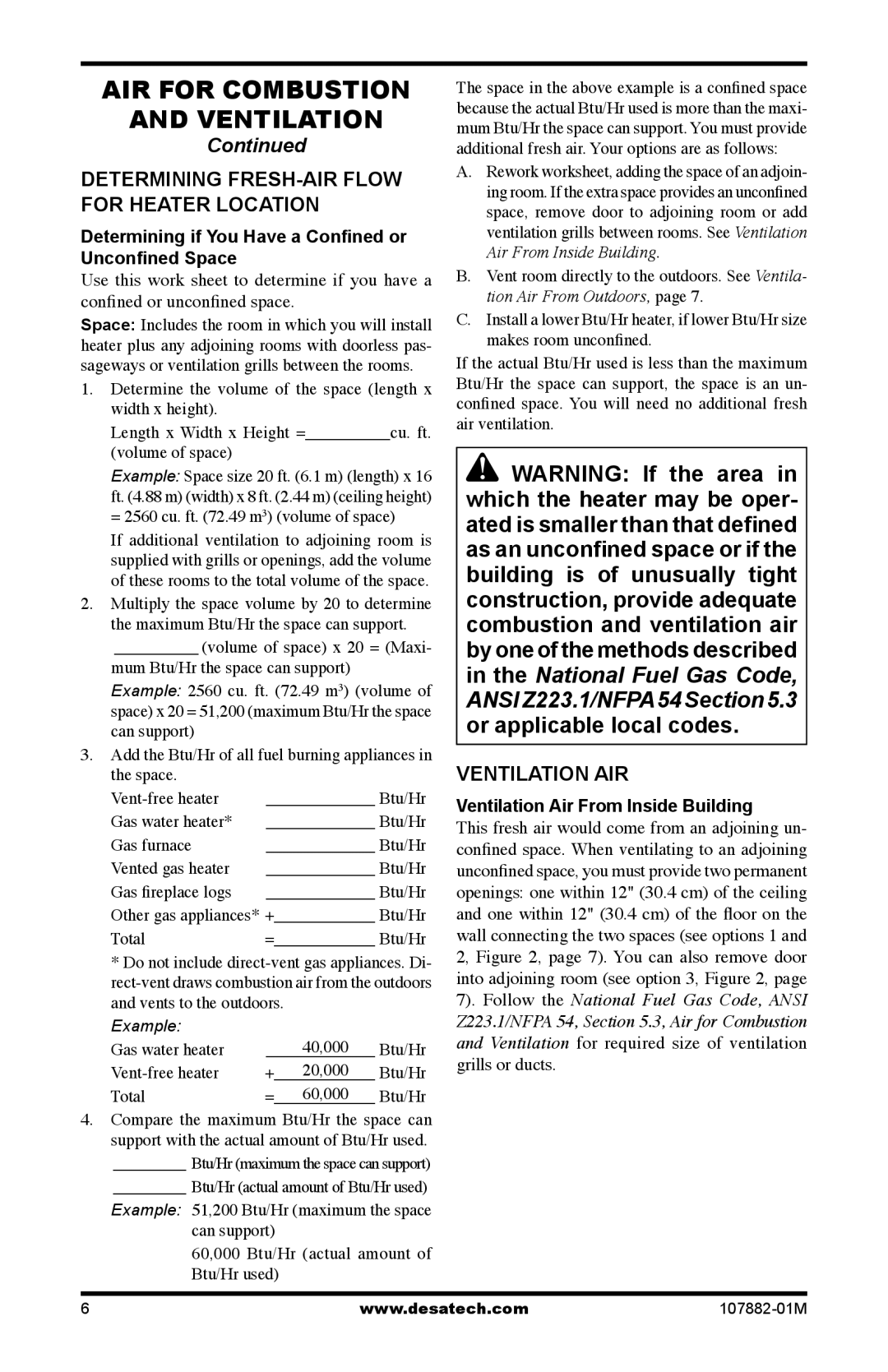CBT30NT, CBT30PT specifications
The Desa CBT30NT and CBT30PT are high-performance heating solutions designed to deliver efficient warmth for both residential and commercial applications. These units are known for their reliability, innovative features, and easy integration into various spaces. They are particularly suited for those seeking effective heating options without compromising on energy efficiency.The CBT30NT, or the natural gas version, stands out with its ability to provide consistent warmth through a direct vent system. This allows for safe operation while minimizing the impact on indoor air quality. It effectively draws combustion air from outside, which is essential for spaces with limited ventilation. The CBT30PT, on the other hand, is a propane variant, providing flexibility for users who may not have access to natural gas lines. Both models are designed with user convenience in mind, featuring a simple control system that allows for easy adjustments and temperature settings.
One of the key characteristics of these heaters is their advanced thermostat control, which enables precise temperature management. This feature ensures energy usage is optimized, preventing unnecessary heating and reducing utility costs. The compact and sleek design of the CBT30NT and CBT30PT allows them to fit seamlessly into any room without being an eyesore.
The heaters are equipped with durable materials, providing resilience against the rigors of daily use. They feature safety mechanisms, including flame failure safety devices, ensuring peace of mind for users. Furthermore, both models incorporate a forced air design, which disperses heat efficiently throughout the space, eliminating cold spots and creating a more uniform climate.
In summary, the Desa CBT30NT and CBT30PT are ideal heating solutions that combine safety, efficiency, and aesthetic appeal. Their natural gas and propane options respectively cater to a diverse range of user needs, making them versatile choices for enhanced comfort. With their advanced technology and user-friendly features, these heaters are a worthy investment for anyone in need of reliable heating solutions. Emphasizing energy efficiency and user safety, they represent the next generation of residential and commercial heating systems.

